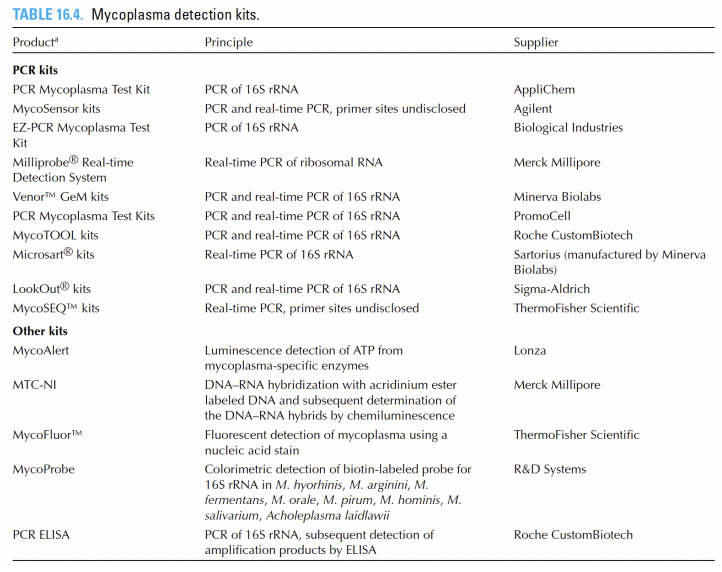Lecture 9 Contamination
Lecture 9 Contamination
- Type
- chemical
- leaching of chemical from disposable plasticware
- QA issue
- inadequate cleaning of glassware
- cells die
- biological
- microbe
- mycoplasma
- virus
- cross-contamination
- contamination may persist or cell die
- chemical
- Consequence
- financial burden
- delay progress
- unreliable data
- loss of resources
- Source
- operator
- environment
- equipment
- reagent
- cell line
- Prevention
- minimize source
- regular monitor
- routine test for mycoplasma/virus
- characterization to confirm cross-contamination
- Detection & eradication
- routine screening
- disposal should be done correctly
- early detection prevent widespread
- Mycoplasma
- class mollicutes
- small, lack cell wall
- depend on host to survive
- grow on host surface/fuse with host
- do not destroy host
- common reduce growth rate
- high titre do not cause morphology change
- chronic effects→chromosomal abnormalities, increased cloning efficiency & transformation rate
- PCR
- detect genotypic changes
- not all variant but more sensitive
- target gene→16S rDNA
- positive control→mycoplasma DNA (510bp)
- negative control→water, no band, false positive
- + internal control→2 bands, make sure PCR normal, false negative
- Direct culture
- cultured cell in mycoplasma broth 6d
- plate on nutrient agar 8d
- positive control→live mycoplasma culture
- fried egg colony 200um diameter
- DNA fluorescence
- less sensitive
- fixed adherent cells + fluorescent dye DAPI/Hoescht binds to DNA
- positive control (for staining)→nuclei of cultured cells
- EN fluorescence
- false positive due to presence of host RNA or debris
- Indicator cells
- adherent cells→enrich mycoplasma growth
- increase sensitivity
- prevent false positive due to autofluorescence/debris
- suspension
- MDCK, A549
- adequate cytoplasm
- spread well in culture
- free from mycoplasma
- Other method→>2 method required for detection

- Eradicate mycoplasma
- decontamination when valuable cells→experienced operator under quarantine



Comments
Post a Comment